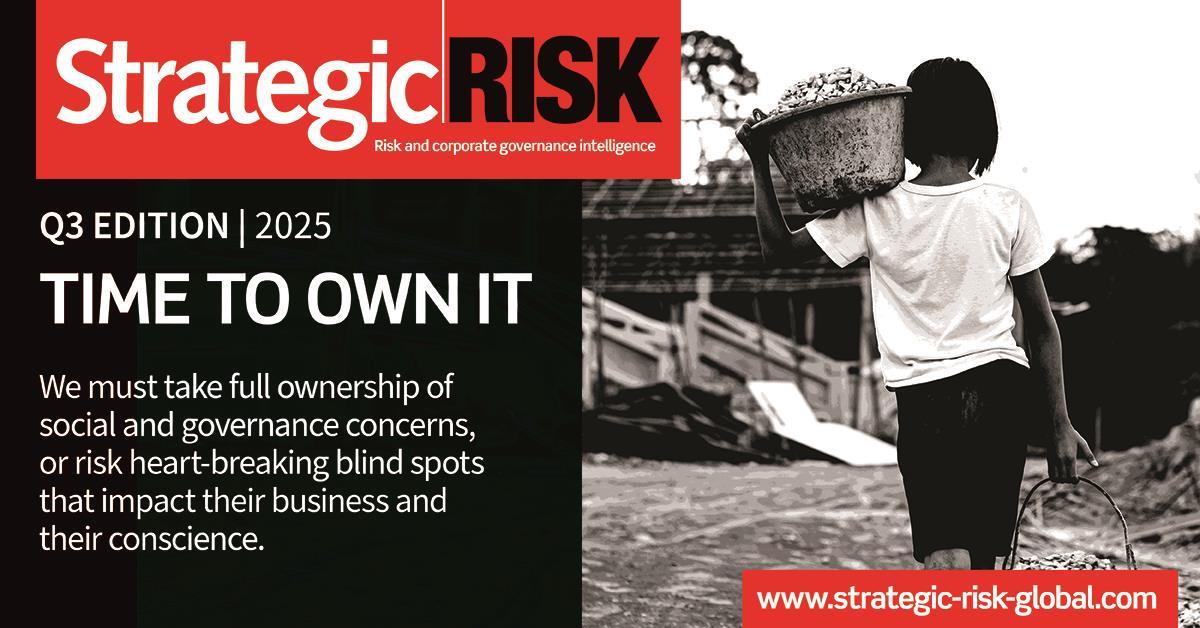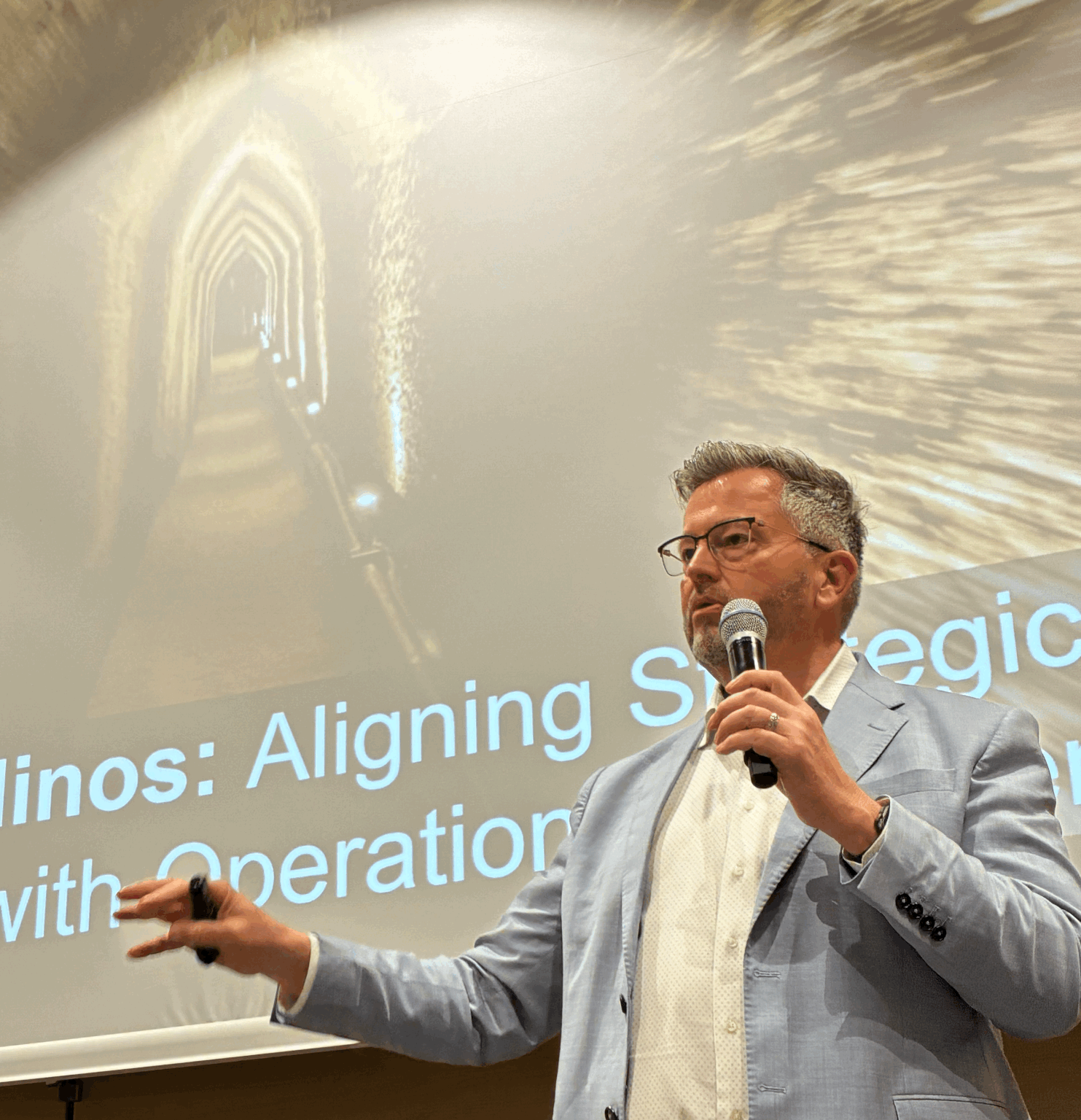At Risk-!n, BD’s Didier Odorico and MEO Continuity’s Maximilian Glodde explored how businesses can make resilience a strategic asset by quantifying risk exposure, building adaptive frameworks and enabling faster decision-making.
For many organisations, business continuity planning remains a compliance-driven exercise — a binder on a shelf. But according to Maximilian Glodde, CEO and founder of MEO Continuity, that approach is no longer sustainable in the face of constant disruption.
“What we are seeing is this isn’t just becoming a check-the-box exercise anymore. It’s really… got board level attention,” said Glodde. “The way we do that is primarily through quantification.”

Using digital frameworks and financial modelling, Glodde’s approach helps organisations calculate the operational and revenue impact of disruption — moving continuity planning from theoretical to strategic. “Anyone can write a business continuity plan… but is it actually making you resilient? And that’s the fundamental question we like to ask.”
Why resilience is becoming harder
Didier Odorico, integrated supply chain director of risk management at BD, brought the practitioner’s perspective. BD, a global medtech firm, manufactures half the world’s syringes — but supply chain resilience is a daily challenge.
“There is a clear trend on extreme events for sure: cybersecurity, geopolitical risks, supply chain disruption in general… We’re constantly managing some sort of crisis,” he said. “In the 2000s, I was doing 80% risk management, 20% crisis management. And this is probably the opposite now.”
Today’s supply chains are too finely optimised — and often too fragile — to absorb external shocks without cascading effects. The solution, said Odorico, lies in a smarter understanding of value creation and interdependencies.
“My job is to improve the resilience of the supply chain. And what is resilience? I tweaked a little bit the definition of the ISO standard — it’s the ability to deliver on time, in full, and I’m adding ‘at cost’.”
Quantifying what matters
For Glodde, understanding where to focus resilience efforts starts with financial quantification.
“We first actually quantify what is important to the business… revenue, gross margin, things of that nature,” he explained. “Then we can have a very clear direction of where we might have bottlenecks.”
He gave an example of a client that manufactured railcars. One machine supported over $1 billion in revenue — yet had no backup. It cost just $60,000 to replace, but took a year to procure. “Once we quantified it in dollar terms… it was a much easier decision for [the CFO] to say, yes, we should buy the second one,” Glodde said. “Six months later — ordered, in storage.”
This, he argued, is “operational insurance” — a measurable investment that protects enterprise value.
Building a dynamic framework
BD is taking a similarly strategic approach. Odorico outlined a dynamic model for mapping supply chain dependencies, fed by financial data but capable of evolving with changing products, sites, suppliers and risks.
“My difficulty is this is super dynamic. We’re constantly changing — new products, closing a site, opening a new site, moving a line,” he explained. “So I need to have a tool that helps me map that in a very dynamic way, where the pull is my financials and my value at the end.”
The goal is not just business continuity, but enabling risk-based decisions across strategic inventory planning, mitigation investments and network optimisation. “When I was looking for a solution for strategic planning, I was looking for a solution for business impact analysis that is simple, practical… that I can give to the first line also eventually.”
Avoiding the Excel trap — and keeping resilience alive
For many teams, over-reliance on spreadsheets has become a hidden barrier to resilience. “We typically see the more you do this year, the more work you just created for yourself next year,” said Glodde. “It eventually becomes unsustainable, especially for small teams.”
Rather than relying on static templates or one-off plans, organisations must treat resilience as a living process. That means regular updates, decentralised inputs and stress-testing that reflects the real-world pace of change.
Odorico highlighted the need for continuous rehearsal. While tabletop exercises still have their place — especially for extreme scenarios — BD treats minor disruptions as real-time training opportunities.
“Even if you have a small issue, you open the book, you open the simulation. Does that still resonate?” he said. “We have probably every year one third of the factory, one half of the organisation, all the functions — they go through some sort of exercise. That’s the reality check.”
Strategic value and supplier collaboration
The real impact of this work, both speakers argued, is in enabling better, faster decision-making. “We’re helping executives make decisions… by cutting the time down to do business impact analysis and business continuity plans by, in some cases, over 50%,” said Glodde.
As supply chains become more complex and interdependent, collaboration with key suppliers will be critical. For strategic vendors, Odorico said, it’s about partnership. “You need to go in partnership with them, analyse the situation… What would be the scenario?”
In some cases, suppliers have adopted the same modelling tools as their customers, enabling shared understanding. “There’s value in that because that’s really how you build a healthy supply chain — you’re all looking at it the same way.”
Final thought: clarity enables choice
For both speakers, resilience begins not with technology, but with clarity. “We want resilience to be baked into how we operate,” said Glodde. “It’s not a binder this big on a shelf somewhere that helps us hopefully respond when bad things happen.”
As Odorico put it: “The business impact analysis is just telling you: if I remove that node, I have all these problems. And then you can drive decisions.”














No comments yet